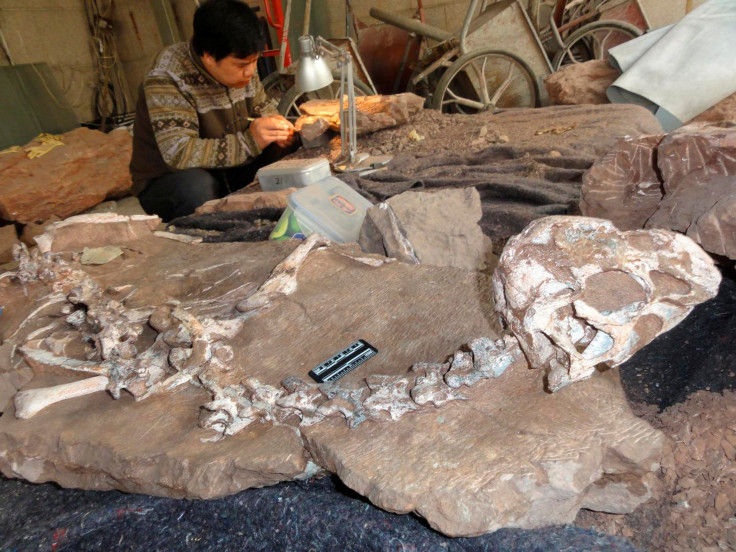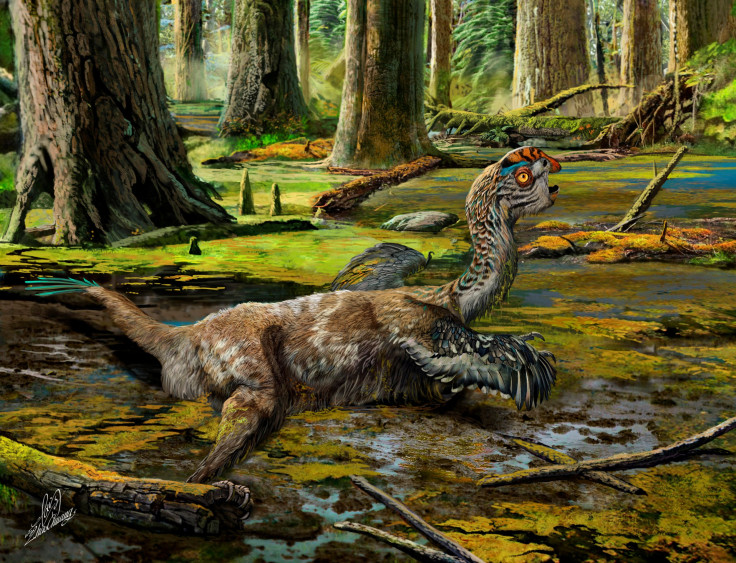New Feathered Dinosaur Species — ‘Mud Dragon’ — Found In China Accidentally

A specimen from a previously undiscovered species of dinosaurs has been found in the Ganzhou area of south China accidentally. The specimen belongs to the group of oviraptorosaurs — bizarre feathered dinosaurs that formed a sub-group of theropods — which were ancestors of birds.
Found after the fossil narrowly missed a dynamite explosion during construction work at a school, the species has been named Tongtianlong limosus, which translates roughly to “muddy dragon on the road to heaven,” earning it the moniker of “mud dragon.” The slightly morbid name does not come from the narrow escape of the fossil from the dynamite, but rather from the posture of the animal at the time of its death — lying on its front with outstretched wings and neck, trying to escape from the mud in which it was stuck.
Steve Brusatte from the University of Edinburgh, one of the researchers who studied the fossil, said in a statement: “This new dinosaur is one of the most beautiful, but saddest, fossils I’ve ever seen. But we’re lucky that the ‘Mud Dragon’ got stuck in the muck, because its skeleton is one of the best examples of a dinosaur that was flourishing during those final few million years before the asteroid came down and changed the world in an instant.”

While T. limosus has wings and was a bird ancestor, it was flightless. Oviraptorosaurs, which ranged in size from about one to 25 feet, were characterized by short toothless heads and sharp beaks. Some within the group, like T. limosus, “had crests of bone on their heads that were probably used as display structures to attract mates and intimidate rivals, like modern-day cassowaries,” the statement said.
Junchang Lü from the Chinese Academy of Geological Sciences, said of the discovery: “It will provide important information on the study of evolution, distribution and behavior of oviraptorid dinosaurs.”
The study, a collaboration between the University of Edinburgh, Institute of Geology, Chinese Academy of Geological Sciences and the Dongyang Museum, China, was published in the journal Scientific Reports under the title “A Late Cretaceous diversification of Asian oviraptorid dinosaurs: evidence from a new species preserved in an unusual posture.”
© Copyright IBTimes 2024. All rights reserved.











